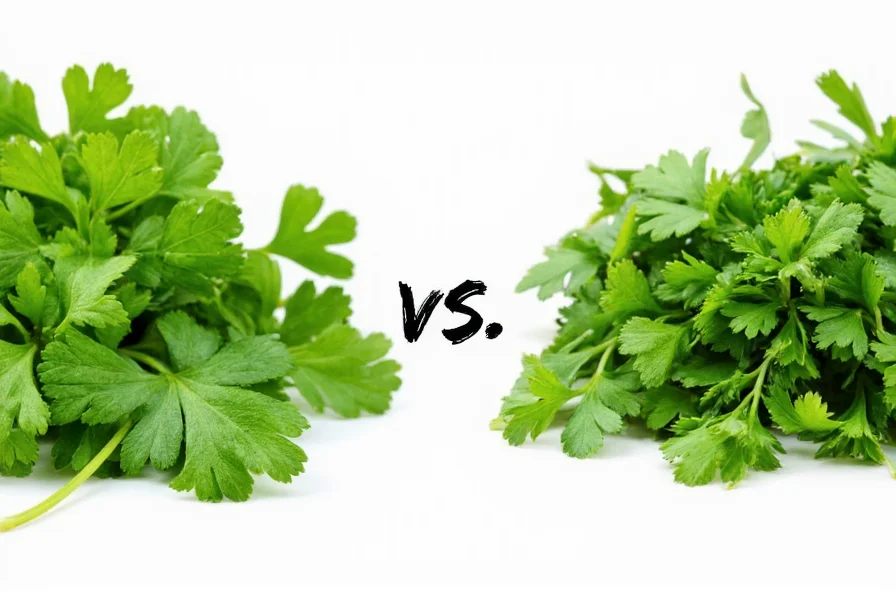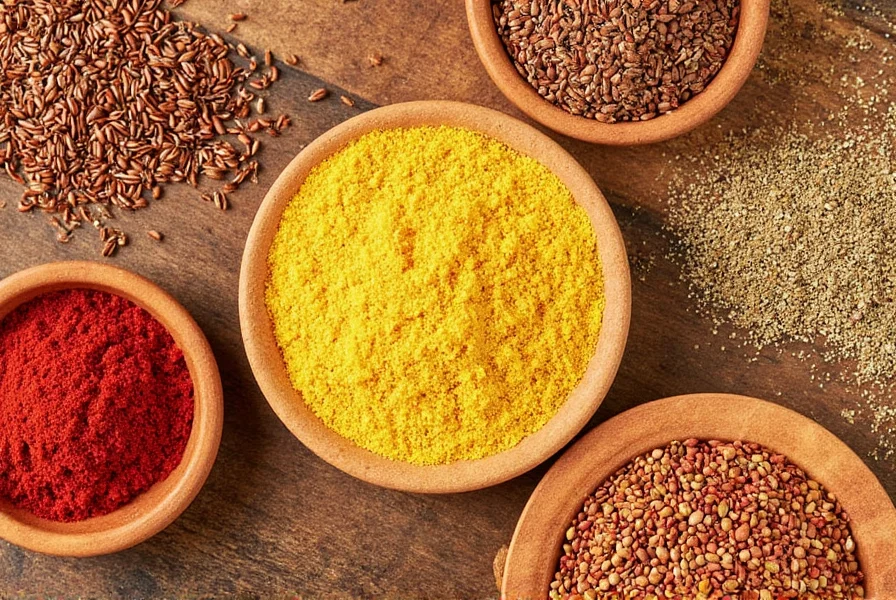Table of Contents
Introduction to Dill and Its Alternatives
When you need a substitute for dill, the top 5 options are fennel seed, cilantro, parsley, caraway seeds, and sesame seeds. Each has unique uses depending on the dish. Here's how to use them effectively:
- Fennel Seed: Best for pickling and fish dishes. Use 1/2 tsp per tbsp of dill. Has a licorice-like note but works well in savory recipes.
- Cilantro: Great for salsas and Mexican dishes. Use 1:1 ratio with fresh dill. Adds a fresh, citrusy flavor.
- Parsley: Ideal for garnishing and light seasoning. Use 1:1 ratio. Mild flavor that won't overpower dishes.
- Caraway Seed: Perfect for breads and stews. Use 1/4 tsp per tbsp of dill. Earthy and warm, best in hearty dishes.
- Sesame Seeds: Adds crunch to Asian dishes. Use 1 tsp per tbsp of dill. Nutty flavor, best for texture.
Dill is a beloved herb with a delicate, slightly sweet flavor that brings a fresh, tangy note to many dishes. It's commonly used in Scandinavian, Eastern European, and Middle Eastern cuisines, especially in sauces like tartar sauce, dressings, and soups. However, when dill isn't available or you're looking for a substitute, it can be tricky to find the perfect alternative. This article explores some of the best substitutes for dill and how to use them effectively.

Top 5 Dill Substitutes You Should Know About
If you're out of dill, don't panic—there are several herbs and spices that can step in as a substitute. Here are five of the best with precise usage details:
- Fennel Seed: Offers a licorice-like flavor and is great for pickling or adding depth to fish dishes. Use 1/2 teaspoon per tablespoon of fresh dill. Toast lightly for enhanced aroma.
- Cilantro: Has a more pungent taste but works well in salads and salsas. Use 1:1 ratio for fresh dill. Best in Mexican, Thai, or Vietnamese dishes.
- Parsley: Mild and versatile, it's ideal for garnishing and light seasoning. Use 1:1 ratio for fresh dill. Flat-leaf parsley works best for flavor consistency.
- Caraway Seed: Adds a warm, earthy flavor suitable for breads and stews. Use 1/4 teaspoon per tablespoon of fresh dill. Ideal for rye bread or beef stews.
- Sesame Seeds: Provides a nutty crunch and is often used in Asian-inspired recipes. Use 1 teaspoon per tablespoon of fresh dill. Toast for maximum flavor in stir-fries or dressings.



Each substitute has distinct flavor characteristics and usage ratios. Always adjust based on your dish's flavor profile—start with smaller amounts and taste before adding more.
Practical Tips for Using Dill Substitutes
Using dill substitutes doesn't have to be complicated. Here are some tips to ensure your dishes still shine:
- Start Small: Substitute one teaspoon at a time, especially if you're unsure about the flavor balance.
- Adjust Cooking Time: Some substitutes, like fennel seed, may need to be toasted or cooked longer to bring out their flavor.
- Pair Wisely: Choose a substitute that complements the other ingredients in your recipe. Cilantro pairs well with lime and chili, while parsley works well with lemon and garlic.
- Use Fresh or Dried?: Fresh herbs tend to be more vibrant, but dried versions are more convenient. For dried substitutes, use one teaspoon of dried for every tablespoon of fresh dill required.
- Consider Texture: If you're using something like sesame seeds, keep in mind that they add texture rather than just flavor.
By following these simple tips, you can confidently swap out dill without compromising the taste or quality of your dish. Remember, cooking is all about experimentation, so don't be afraid to try new combinations!
Buying Guide: Choosing the Right Dill Substitute
| Substitute | Best Use Case | Target Audience | Suitable Occasions |
|---|---|---|---|
| Fennel Seed | Pickling, fish dishes, hearty stews | Cooking enthusiasts, traditional cuisine lovers | Family dinners, holiday meals |
| Cilantro | Salads, salsas, Mexican and Thai dishes | Spice lovers, international cuisine fans | Weekend lunches, casual gatherings |
| Parsley | Garnishing, light seasoning, sauces | Home cooks, beginners | Everyday meals, brunches |
| Caraway Seed | Breads, stews, sausages | Traditional bakers, comfort food lovers | Brunches, festive meals |
| Sesame Seeds | Asian dishes, breads, stir-fries | Global cuisine enthusiasts | International dinners, special occasions |
When shopping for dill substitutes, look for high-quality products that are free from additives. Fennel seeds should be whole and aromatic, while cilantro leaves should be bright green and crisp. Parsley is often sold in bunches, so check for freshness. Caraway seeds are usually sold in small bags, and sesame seeds come in both black and white varieties.
Remember, the right substitute depends on the dish you're making and your personal taste preferences. Whether you're aiming for a subtle hint or a bold flavor, there's a dill alternative that will work for you.
Conclusion: Dill's New Friends Are Here
While dill is a staple in many kitchens, it's not always easy to find. Fortunately, there are plenty of substitutes that can step in when needed. From fennel seed to sesame seeds, each alternative offers a unique flavor that can enhance your dishes in different ways.
So next time you're in the kitchen and realize you're out of dill, don't worry—your go-to substitute is just a quick search away. With the right knowledge and a bit of creativity, you can make any dish shine, even without the original ingredient.
And remember, the sub for dill is not just about replacing a flavor—it's about exploring new tastes and expanding your culinary horizons. Happy cooking!
Frequently Asked Questions About Dill Substitutes
What's the closest substitute for fresh dill in taste?
Fennel seed is generally considered the closest substitute for dill in terms of flavor profile, though it has a more pronounced licorice note. Fresh dill weed has a delicate, slightly sweet flavor with tangy notes, while fennel seed offers similar aromatic qualities. For a more direct substitution in fresh applications, you could use a combination of parsley (for the fresh green element) and a small amount of fennel seed (for the distinctive flavor note).
How much of a substitute should I use when replacing dill in a recipe?
When substituting for fresh dill, start with a 1:1 ratio for fresh herbs like parsley or cilantro. For seeds like fennel or caraway, use about 1/4 to 1/2 teaspoon of seeds for every tablespoon of fresh dill called for. Remember that seeds have a more concentrated flavor than fresh herbs. Always start with less, taste, and adjust as needed since substitute flavors can vary significantly from dill's distinctive taste.
Can I use dried dill as a substitute for fresh dill?
Yes, but with adjustments. Dried dill has a more concentrated flavor but lacks some of the fresh brightness of fresh dill. As a general rule, use one teaspoon of dried dill for every tablespoon of fresh dill required. For best results, add dried dill earlier in the cooking process to allow its flavors to infuse, while fresh dill is typically added near the end of cooking to preserve its delicate flavor.
Which substitute works best for pickling when I don't have dill?
Fennel seed is the best substitute for dill in pickling recipes. It provides a similar aromatic quality and works especially well with cucumbers and other vegetables. Use about 1/2 teaspoon of fennel seeds per quart of pickling liquid. You could also add a small sprig of fresh tarragon if available, as it shares some flavor compounds with dill. For a more complex flavor, combine fennel seed with a pinch of celery seed.
What's a good substitute for dill in tzatziki sauce?
For tzatziki sauce, parsley is the best substitute as it won't overpower the delicate yogurt-cucumber balance. Use flat-leaf (Italian) parsley for the best results. You can also add a tiny pinch of dried dill weed if you have it, or a very small amount of fresh tarragon. Avoid stronger substitutes like cilantro which would clash with the traditional Mediterranean flavors of tzatziki.
Can I combine multiple substitutes to better mimic dill's flavor?
Absolutely. For a more complex substitute that better mimics dill's unique flavor, try combining 1 part fresh parsley (for the green, herbal note), 1/4 part fresh tarragon (for the slight anise note), and a tiny pinch of fennel seed (for the distinctive aromatic quality). This combination works particularly well in salads, dressings, and fish dishes where dill is traditionally used.










 浙公网安备
33010002000092号
浙公网安备
33010002000092号 浙B2-20120091-4
浙B2-20120091-4